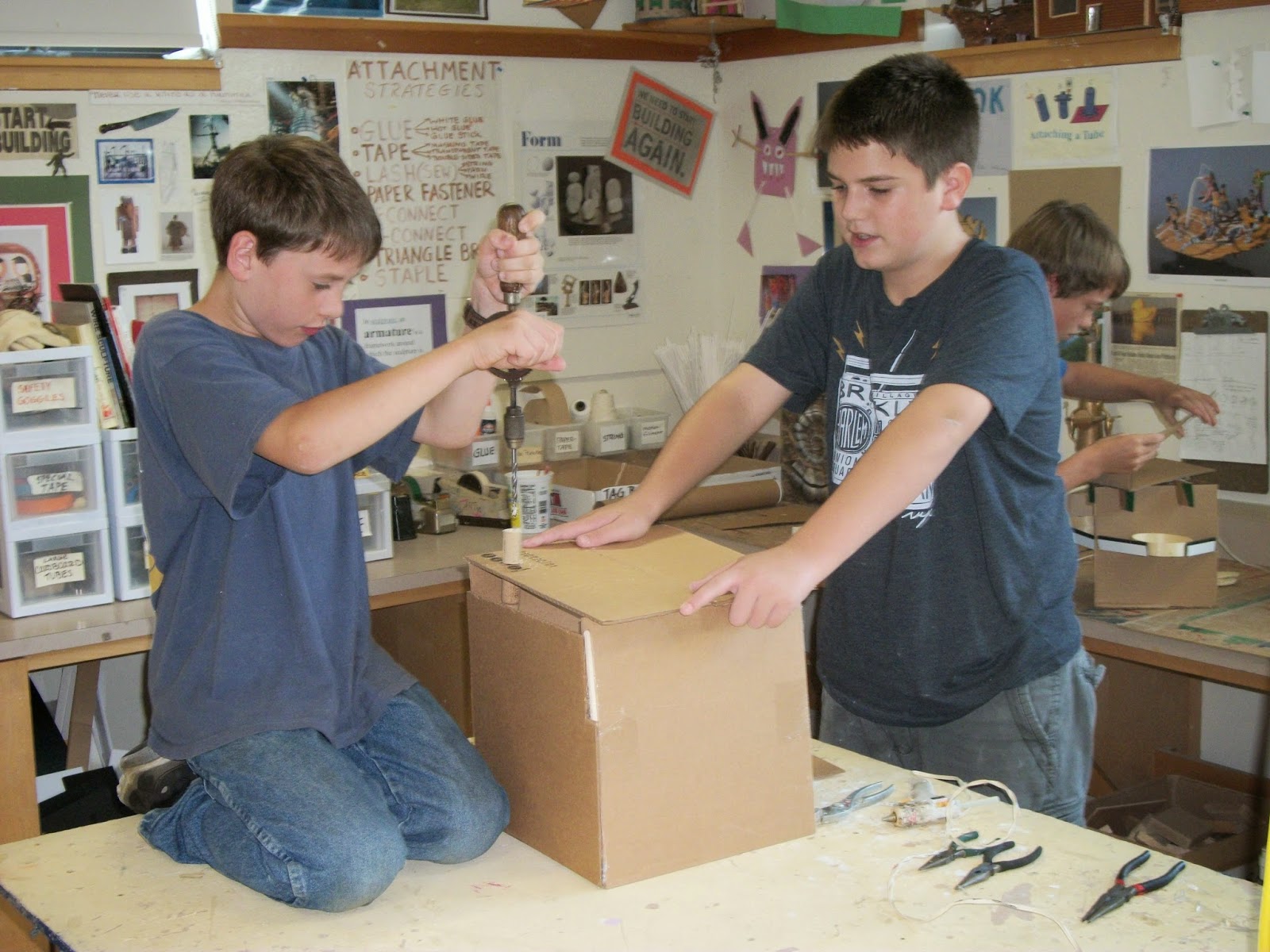It seems appropriate to sub-title this post: "What I Did On My Summer Vacation," although planning for the first ever TAB institute was a year-long endeavor!
The summer TAB institute was a big success: 43 teachers from 18 states attended, lauded author and researcher Lois Hetland (Harvard Project Zero) delivered the keynote address, and
Massachusetts College of Art and Design provided the venue, including a gallery for a TAB student art show, studio, dormitory, classroom & meeting space.
Attendants were given free TAB t shirts - why are only 4 of us modeling them?
Authors and TAB founders Kathy Douglas and Diane Jaquith, along with Clyde Gaw and I were instructors and organizers for the week-long program offered for 3 graduate credits. Field trips to the historic
Fenway Studios and the Gardner Museum and time for side trips to both the Museum of Fine Art and the Institute of Contemporary Art provided a rich visual art experience to balance classroom lectures, round-table discussions, and studio time.
 |
Lois Hetland relates her "Studio Thinking Habits of Mind" to choice-based art pedagogy in the opening Keynote
Teachers in "Track II" set up studio centers from their classrooms to share with the group and participated in a lively "demo-slam," demonstrating how content can be delivered in a brief whole-group lesson format.
|
 |
Art teachers found needle-felting to be just as addictive as my CBMS middle school students!
Thank you CBMS for loaning the drum wool carder for the week so teachers could learn to prepare wool for felting
Centers were open in our gallery/studio each evening for artmaking and conversation.
|
 |
| Our view from "The Tree house" dorm where we stayed |
Thanks to Dr. John Crowe, Anne Bedrick, Ellyn Gaspardi, Candi Price, Jeff Pridie, Ian Sands, Colleen Rose, Cameron Sesto & Renee Nolan for providing inspirational sessions for the first national TAB institute.













